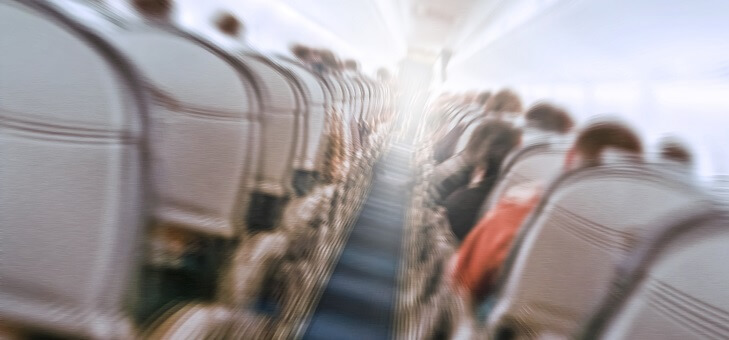Humans love a good urban myth.
Paul McCartney is dead, Elvis is alive, panthers roam country Australia, the brown note (I’m not explaining that, look it up), the list goes on.
Top of the travel list is that the brace position, instead of saving your life, is in fact designed to kill you quickly to avoid suffering. The myth goes that a quick death also preserves the body better, making identification easier.
Also, apparently airlines would rather hand over a one-off death payment rather than a lifetime of disability support. It’s quite the multitasking myth.
Although this last one is true, the television show MythBusters found the amount of money paid out for wrongful death is lower than the amount for permanent injury compensation, but there was no evidence airlines were actively killing their passengers to save money. Phew.
Read more: Is this the next big tourist destination for Australians?
You can kind of see the point about the brace position. You have your head bent at an angle against the seat in front of you. It seems an ideal way to snap your neck quickly, and let’s face it in the plane versus mountain scenario, placing your head on a seat does seem an unlikely way to save your life.
It neatly feeds into unsupported fears about flying, because we all know it’s safer to fly than drive, but that doesn’t stop many of us continuing to be terrified of submitting ourselves to a metal tube travelling at hundreds of kilometres an hour in the sky. Okay, maybe there is a point to that fear of flying thing.
Anyway, the brace theory is a load of rubbish.
According to the Civil Aviation Safety Authority more than 70 per cent of airline accidents are survivable.
Read more: Plan your next trip with a layover destination in mind
“Seventy one per cent of people who die in survivable crashes do so after the aircraft comes to a complete stop. In many cases it’s because they are unprepared for the crash,” it said.
And the US Federal Aviation Administration says there are two primary reasons for the brace position, one is to reduce flailing and the second is to reduce secondary impact.
The brace position began to be taken seriously after a 1989 crash in the UK known as the Kegworth crash, where of the 118 passengers on board, 39 were killed outright and eight died later of their injuries. All eight crew members survived.
An analysis of the incident found that many injuries and deaths were caused by passengers’ legs flailing against seat backs and luggage restraint bars. It found small changes to the previously recommended brace position would improve the chances of survival or being seriously injured.
Read more: Is this the future of airline travel?
According to a medical journal article on the incident: “Those passengers who adopted the fully flexed ‘brace’ position achieved significant protection against head injury, concussion, and injuries from behind irrespective of local aircraft structural damage.”
The report also said “bracing maximises the chance of uninjured survival”.
The recommended changes were the current brace position with passengers keeping their feet further back than their knees, bending the upper portion of their body forward, wearing their seat belts as tight and low on their laps as possible and resting their heads against the seatbacks in front of them.
And as for that close cousin of the brace myth, that there is no oxygen in the overhead masks also to facilitate a quick death … once again, complete rubbish. You’re welcome.
If you enjoy our content, don’t keep it to yourself. Share our free eNews with your friends and encourage them to sign up.

